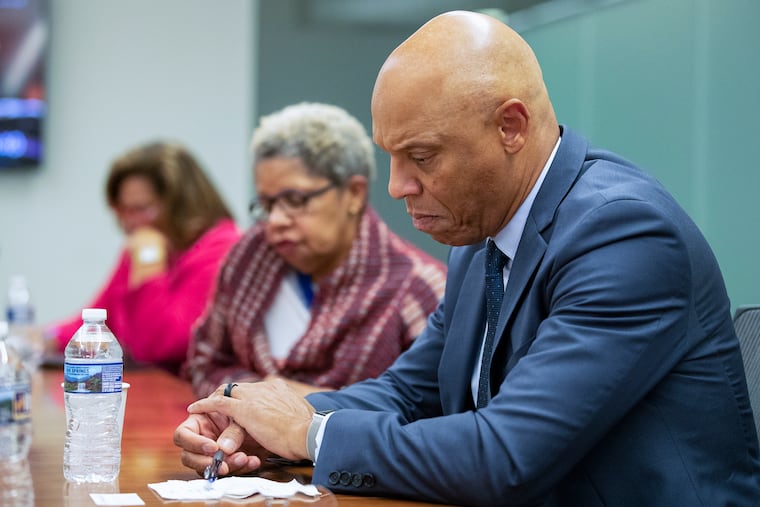In Ben Franklin/SLA asbestos crisis, the whole system is guilty | Editorial
When kids are faced with a choice of either staying at home or risking their health in school, everyone deserves some blame.

In a district where the average age of school buildings is 70 years old and three-quarters of those buildings are in disrepair, too many Philadelphia schools are environmental ticking time bombs. Last month, one of those bombs exploded.
The Science Leadership Academy and Benjamin Franklin High School shut down abruptly on Sept. 30 after damaged asbestos was found in the North Broad Street joint premises of the schools. Parents and students were originally told that the schools will be closed temporarily, but after more than a week, they learned the schools will be closed indefinitely. Where the 1,000 students will learn is still an open question.
Old infrastructure, decades of disinvestment, and lack of capacity and preparedness from the School District led us to this point. Finding a location for students to get back to class is a critical and immediate first step. But the crisis will be ongoing until the district, city, and commonwealth put in place the resources and governance structures to prevent something like this from happening again.
Exposure to asbestos can lead to a cancer called mesothelioma. According to Superintendent William Hite, 175 out of more than 300 School District buildings contain asbestos. The federal guidelines require visual inspections once every six months. As the first step of a $37 million construction project to prepare Ben Franklin high school as a colocation with SLA, asbestos was abated. During subsequent construction, asbestos that was previously unmarked, and hence unabated, was damaged, rendering it dangerous.
» READ MORE: The Inquirer's investigation into asbestos perils in Philadelphia schools
Superintendent Hite and the Philadelphia Board of Education did not put asbestos in schools. They were dealt a bad hand and a difficult situation. However, their handling of the situation lacks finesse.
As parents at a town hall meeting this week made clear, the process has opened deep wounds of inequity. For a long time, the students of Ben Franklin studied in a construction site — some complained about dust — but the alarm bells officially went off only this year when the SLA magnet school students came in.
The district also had no contingency plan. It is well-known that working with materials like asbestos increases the risk of hazard. The district was caught off guard when that risk materialized.
» READ MORE: What Philadelphia school parents need to know about asbestos at Ben Franklin/SLA
In a meeting with the editorial board, Hite said that the district and board have learned their lessons, and are preparing space in South Philadelphia and Strawberry Mansion schools to be permanent “swing spaces” if other schools ever need to be evacuated.
The current crisis also raises questions about the district’s capacity to oversee construction projects. According to Hite, only one person oversees 37 construction projects. That’s a situation driven by years of budget cuts, but now the question is whether the best remedy is to bolster the district’s headquarters capacity, or take the management of construction projects out of the hands of the district to another entity.
For decades, neither the safety nor the education of Philadelphia’s children has been a top priority for lawmakers and elected officials in City Hall or Harrisburg. When kids are faced with a choice of either staying at home or risking their health in school, everyone deserves some blame.